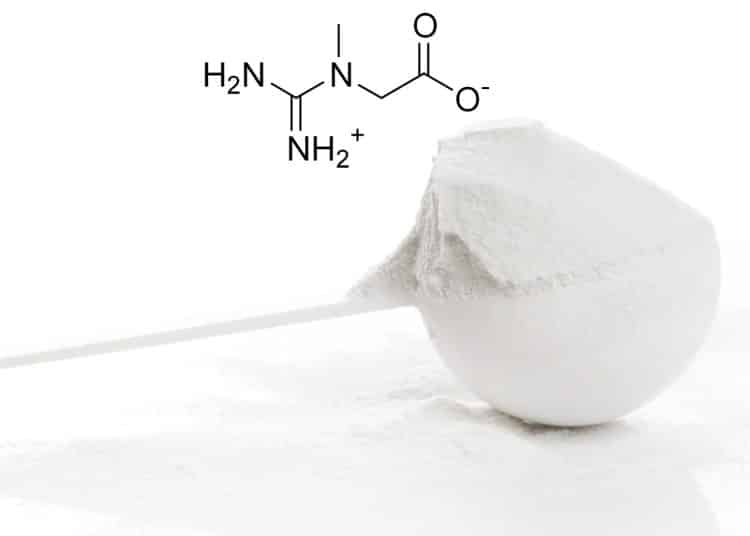Creatine is one of the most widely used and well-researched sports supplements. It has been consistently shown to increase muscle strength, power, size, and performance when combined with resistance training.
However, there are different forms of creatine available. The two most common are creatine monohydrate (CM) and creatine ethyl ester (CEE). But which one is more effective?
In this comprehensive guide, we’ll compare creatine monohydrate and creatine ethyl ester side-by-side to help you determine which form is right for you.
What is Creatine?
First, let’s start with a quick overview of what creatine is and how it works.
Creatine is a naturally occurring compound that is found in the muscles and brain. It plays an important role in providing energy for intense, short-duration exercises like weightlifting or sprints.

Here’s how it works:
Level Up Your Fitness: Join our 💪 strong community in Fitness Volt Newsletter. Get daily inspiration, expert-backed workouts, nutrition tips, the latest in strength sports, and the support you need to reach your goals. Subscribe for free!
- Creatine binds with phosphate to form phosphocreatine.
- Phosphocreatine donates its phosphate molecule to ADP to form ATP.
- ATP is the primary energy source for muscle contractions.
By increasing creatine stores in the muscle, you can form more ATP energy to fuel workouts and boost performance.
Supplementing with creatine has consistently been found to:
- Increase lean muscle mass and strength gains from training
- Improve high-intensity exercise capacity
- Reduce fatigue and increase repetitions
- Enhance muscle power and explosiveness
It’s no wonder why athletes, weightlifters, and fitness enthusiasts have been using creatine for decades.
Now let’s look at the two most common supplemental forms.
Creatine Monohydrate (CM)
Creatine monohydrate is the most common, cheapest, and well-researched form of creatine.
It consists of a creatine molecule bound to a water molecule, giving it its “monohydrate” name. This form dissolves easily in water.
Benefits of creatine monohydrate include:
- Most research-backed form of creatine – Over 500 studies demonstrate its effectiveness and safety.
- Increases lean muscle mass – A review found it boosts lean mass gains from training by 6-7 pounds (2.7-3.1 kg) after 12 weeks.
- Improves strength and performance – Can increase bench press strength by up to 25% and short-term sprint performance by 1-5%.
- Very affordable and widely available – Costs just 3-5 cents per serving. Sold by most supplement companies.
The recommended dosage is 3-5 grams per day, typically split before and after workouts. It’s best absorbed with a high carb/protein meal or shake.
Some people experience bloating and water weight gain when starting creatine monohydrate. This subsides within 1-2 weeks as the muscles become saturated.
Overall, creatine monohydrate is the gold standard form that is affordable, safe, and highly effective for improving exercise performance.
Creatine Ethyl Ester (CEE)
Creatine ethyl ester is a form of creatine that has an ester molecule attached to increase absorption.
Proposed benefits of CEE include:
- Enhanced bioavailability – The ester is said to help transport creatine into muscle cells.
- No water retention – Claims that CEE doesn’t cause bloating compared to monohydrate.
However, CEE has two major drawbacks:
Drawbacks of CEE:
- Less research backing – Only a handful of small studies on CEE exist.
- High cost – Typically costs over 5 times more than creatine monohydrate per serving.
Unfortunately, the proposed benefits of creatine ethyl ester are not supported by research…
CEE vs CM Research
Several studies have directly compared creatine monohydrate and creatine ethyl ester head-to-head.
The results consistently show:
- CEE is less stable – Up to 40% degrades to creatinine in stomach acid before reaching muscles.
- CM increases muscle creatine levels more – CEE does not significantly raise muscle creatine above placebo.
- No added performance benefits – CM and CEE produce the same strength and power improvements.
- Similar side effects – Both can initially cause water retention, no differences.
In one 7-week study on weightlifters, the CM group gained significantly more muscle mass than the CEE or placebo groups. Strength and power increased equally with both forms.
Researchers concluded:
“CEE supplementation did not result in any significant enhancements in body mass or performance measures when compared to CM or placebo.”
Overall, studies clearly demonstrate that creatine monohydrate is more effective at increasing intramuscular creatine levels and enhancing training adaptations like muscle growth.
Any claims that CEE is superior appear to be unfounded when looking at the science.
Which Should You Take?
When comparing creatine monohydrate vs creatine ethyl ester, the research overwhelmingly supports creatine monohydrate:
- CM has hundreds more studies showing it’s safe and effective
- CM reliably boosts muscle creatine levels more than CEE
- CM and CEE improve training performance equally
- CM causes no more side effects than CEE
- CM costs a fraction of the price
Therefore, creatine monohydrate is the recommended form for the vast majority of people.
The only potential exceptions are:
- Those who don’t respond well to normal CM dosing. However, higher dosing typically resolves this.
- Those willing to pay 5x more for CEE in hopes it may work better for them as an individual, despite no research showing superiority.
But for most looking to maximize muscle strength and growth with creatine supplementation, monohydrate is clearly the evidence-backed gold standard.
Learn more about Creatine:
- The 5 Supplements Worth Taking (And Another Five That Aren’t)
- Creatine Before and After: How Creatine Supplement Affects Your Body
- I’m a Supplement Researcher — These 3 Creatine Forms Will Supercharge Your Gains (and One’s a Total Rip-Off)
- Creatine and Acne: Are You Making This Common Mistake?
- STOP Wasting Your Creatine! The Ultimate Guide to Proper Usage
- How Long Does Creatine Stay in Your System? A Doctor Explains
- What Happens To Your Body When You Take Creatine Every Day For Muscle Gain?
- Creatine + Whey Synergy: The Science Behind This Power Duo’s Muscle-Building Magic
The Bottom Line
Creatine monohydrate and creatine ethyl ester are the two major supplemental forms of creatine.
Research consistently shows that creatine monohydrate:
- Is more affordable
- Increases muscle creatine levels better
- Safely and effectively boosts training performance
Creatine ethyl ester has not been shown to have any significant advantages despite aggressive marketing claims. It also costs far more.
So if you want to experience the proven performance-enhancing effects of creatine, creatine monohydrate is the clear winner.
Stick to 3-5 grams per day of creatine monohydrate powder (ideally micronized CM), and you can rest assured knowing you’re using a highly effective, research-validated workout supplement.








